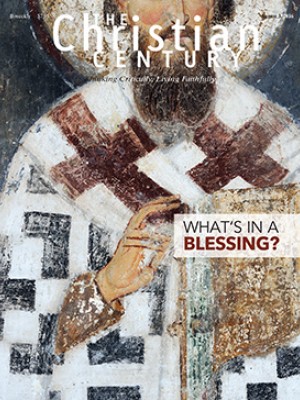Church of Sweden renews connections with drop-in weddings and baptisms
(The Christian Science Monitor) You can drop in at a hairdresser without an appointment or show up at a clinic unscheduled. But what about a drop-in church wedding or a baptism?
You can have one in Sweden.
The idea came to Jerker Alsterlund, a pastor in the city of Västerås and an vintage car enthusiast, when he attended the Power Big Meet American car show near Västerås in 2008.
“A couple had asked me to marry them there, which I did,” he said. “But when I was there, another woman asked me if I could marry her and her partner, too. I said, ‘That’s not how it works; you have to be prepared.’ But afterwards I realized that it’s the church that’s not prepared. And I realized that there are lots of couples like them.”
Before returning to the show the following year, Alsterlund told car magazines that he would be offering drive-in nuptials. He enlisted nine other pastors to assist, and 60 couples got married.
“If they say that they love each other and want the church’s blessing of their relationship, it’s my obligation to marry them,” he said.
As Alsterlund sees it, drop-in weddings and baptisms are a way for the Church of Sweden to create a connection to the millions of people who are members but who don’t participate in their parish’s services and other activities.
“Otherwise they start thinking, why should I be a member anyway?” he said.
Other pastors—primarily in the Church of Sweden—picked up the idea, performing drop-in weddings in their own churches, and in short order drop-in baptisms followed. Such rituals are now offered in churches in every major city along with many smaller towns, though the Church of Sweden doesn’t collect statistics on how many.
Read our latest issue or browse back issues.
At first church representatives were aghast at what they saw as cavalier treatment of the liturgy. Then, three years ago Alsterlund received the Church of Sweden’s Innovator of the Year award.
“He has found formats that meet members who don’t belong to the parish core,” the jury wrote.
And the drop-in sacraments continue to be popular. On one Saturday in April at the medieval cathedral in the southern city of Lund, 45 couples, some with guests and some without, came to get married. The cathedral supplied pastors, musicians, and witnesses.
“We’ve had drop-in baptism days before, with between four and 17 children baptized each time,” said Josefin Andersson, a pastor at the cathedral. “We thought if 20 couples turn up to get married, it’s excellent. But then 45 couples turned up. We almost thought we’d not be able to accommodate all of them.”
But Andersson and her colleagues got all of the couples married. As planned, each couple had a 20-minute premarital talk with one of the pastors, chose two hymns and a song, and went to one of the altars with the pastor and the musician for their 20-minute ceremony.
“It gets really condensed this way,” Andersson said. “You get to the important parts straightaway.”
The Church of Sweden struggles with the same problem as many other mainstream denominations in Europe, especially those that are state churches or have been (the Church of Sweden separated from the state in 2000). While they may have a large number of members, the number of active ones is often tiny.
Last year 63.2 percent of Sweden’s 9.9 million residents belonged to the Church of Sweden, down from 86 percent in 1995. And during the same time, annual service attendance has dropped from 9 million to 4 million.
According to Magdalena Nordin, an assistant professor of the sociology of religion at the University of Lund, the Church of Sweden needs new strategies.
“The church has to do something,” she said. “This way more people will get married in church and will get baptized. And in a small intimate ceremony people pay more attention to what is being said, whereas a large ceremony means the couple is often very nervous because it’s such a big social event.”
The Church of Sweden has not yet measured whether it has resulted in the couples and families remaining involved with their parishes. But Alsterlund has made his own observations over the past eight years.
“I get a lot of e-mails from the couples and families,” he said. “Around three-quarters of them stay in touch. Many tell me about their parishes at home, what they think of the pastor. And many do get involved in their parishes.”
And Nordin, who studies religious participation, argues that drop-in ceremonies don’t necessarily mean that the couples and families take the rituals less seriously.
“Perhaps some take it lightly, but I’m not sure that people with large ceremonies take the religious aspect more seriously,” she said.
Pastors who have performed drop-in weddings and baptisms report that the ceremonies, stripped as they are of all the social attributes, mean the couples and families sign up for them for the right reasons. And, counterintuitive though it may seem, drop-in ceremonies may focus couples’ and families’ attention on the Christian aspect.
“Drop-in sounds very superficial, sloppy, like an assembly line,” Alsterlund said. “But drop-in weddings and baptisms are helping us rescue Christian ceremonies from the commercial powers that have taken over our ceremonies and redefined them.”
This article was edited on July 25, 2016.





